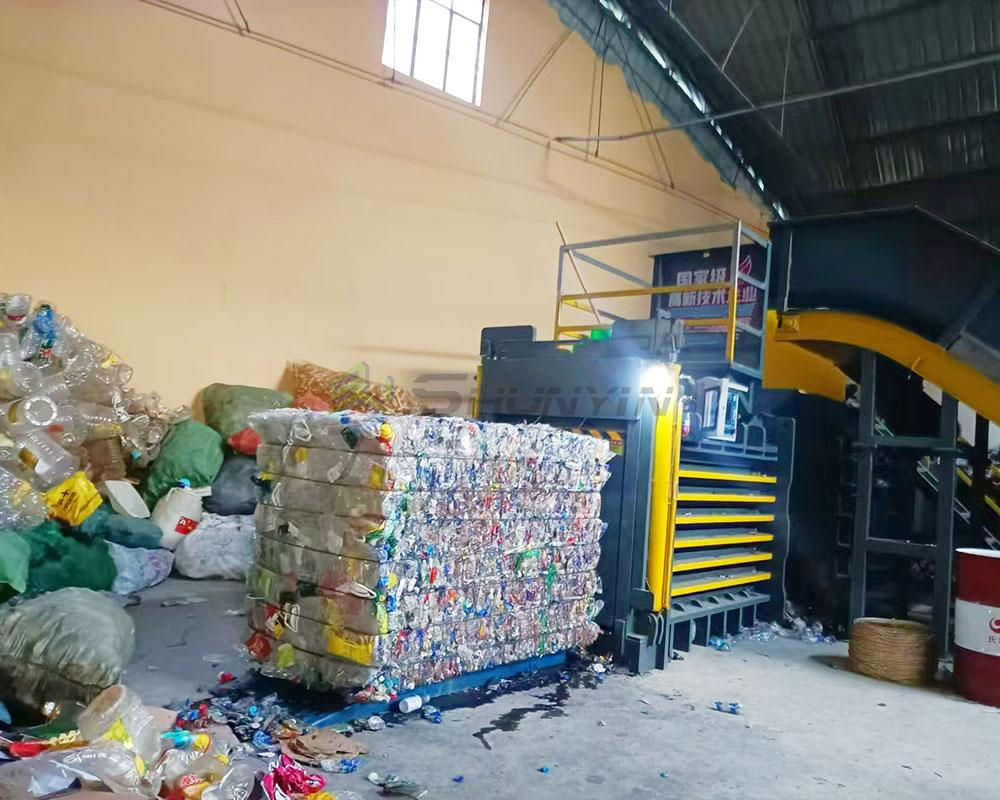
Are you struggling with managing cardboard waste efficiently?
Hydraulic baler machines are highly effective for cardboard recycling in China due to their high compression efficiency, cost-effectiveness, and durability. Key benefits include:
- High Compression: Efficiently compresses large volumes of cardboard, reducing storage and transport costs.
- Cost-Effective: Affordable, with lower operational costs due to automation and high throughput.
- Durability: Built to last with high-strength steel, ensuring reliable long-term use.
- Automation: Reduces labor costs and increases productivity with automated feeding, compression, and tying.
- Environmental Impact: Contributes to sustainability by reducing landfill waste and improving recycling rates.
Imagine transforming your recycling operations with a machine that boosts efficiency and sustainability.
What is a cardboard baling machine?
Are you wondering what exactly a cardboard baling machine does?
A cardboard baling machine compresses cardboard into compact bundles, making it easier to handle, transport, and recycle, thereby enhancing operational efficiency.

How Does a Cardboard Baling Machine Work?
A hydraulic baler operates by using hydraulic pressure to compress cardboard into tight bales. This process involves several steps:
- Loading: Cardboard is fed into the machine.
- Compression: Hydraulic forces compress the material.
- Tying: Bales are secured with wire or straps.
- Ejection: The compacted bale is removed for transport.
| Step | Description |
|---|---|
| Loading | Cardboard is introduced into the baler. |
| Compression | Hydraulic pressure reduces the volume of the cardboard. |
| Tying | Bales are secured to maintain shape and stability. |
| Ejection | Finished bales are expelled for collection. |
This process not only saves space but also facilitates easier handling and recycling of cardboard materials.
Can you put plastic in a cardboard baler?
Is it possible to process plastic alongside cardboard in a baler?
While some balers can handle mixed materials, it’s generally not recommended to include plastic in a cardboard baler to prevent machine damage and ensure optimal baling performance.

Risks of Mixing Plastic with Cardboard
Including plastic in a cardboard baler can lead to several issues:
- Machine Damage: Plastics can cause wear and tear on the baler’s components.
- Contamination: Mixed materials can complicate the recycling process.
- Efficiency Loss: The presence of plastic may reduce the baler’s compression effectiveness.
| Issue | Description |
|---|---|
| Machine Damage | Plastic materials can scratch or clog the baler. |
| Contamination | Mixed recyclables may not be processed correctly. |
| Efficiency Loss | Balers are optimized for specific materials like cardboard. |
To maintain the longevity and efficiency of your baler, it’s best to separate plastics from cardboard before baling.
What is a recycling baler?
Are you curious about what a recycling baler entails?
A recycling baler is a machine designed to compress recyclable materials like cardboard, paper, and plastics into dense, manageable bales, facilitating easier handling and transportation.

Benefits of Using a Recycling Baler
Using a recycling baler offers several advantages:
- Space Efficiency: Compacted bales take up less storage space.
- Cost Savings: Reduced transportation costs due to lower volume.
- Environmental Impact: Enhanced recycling processes contribute to sustainability.
| Benefit | Description |
|---|---|
| Space Efficiency | Bales occupy less space, optimizing storage. |
| Cost Savings | Lower transportation costs due to reduced volume. |
| Environmental Impact | Improved recycling rates support sustainability. |
Implementing a recycling baler can significantly improve your waste management strategy, making your operations more efficient and environmentally friendly.
Is a cardboard baler worth it?
Are you considering whether investing in a cardboard baler is beneficial?
Investing in a cardboard baler is worthwhile as it enhances recycling efficiency, reduces waste management costs, and supports sustainable business practices.

Evaluating the Return on Investment (ROI)
When assessing the value of a cardboard baler, consider the following factors:
- Cost Savings: Lower waste disposal and transportation costs.
- Efficiency Gains: Faster processing of recyclable materials.
- Sustainability Goals: Alignment with environmental initiatives.
| Factor | Impact |
|---|---|
| Cost Savings | Reduced expenses related to waste management. |
| Efficiency Gains | Increased speed and volume of recycling operations. |
| Sustainability Goals | Contribution to eco-friendly business practices. |
The initial investment in a baler can be offset by long-term savings and the positive impact on your company’s sustainability efforts.
Conclusion
A hydraulic baler is a valuable asset for efficient and sustainable cardboard recycling.








